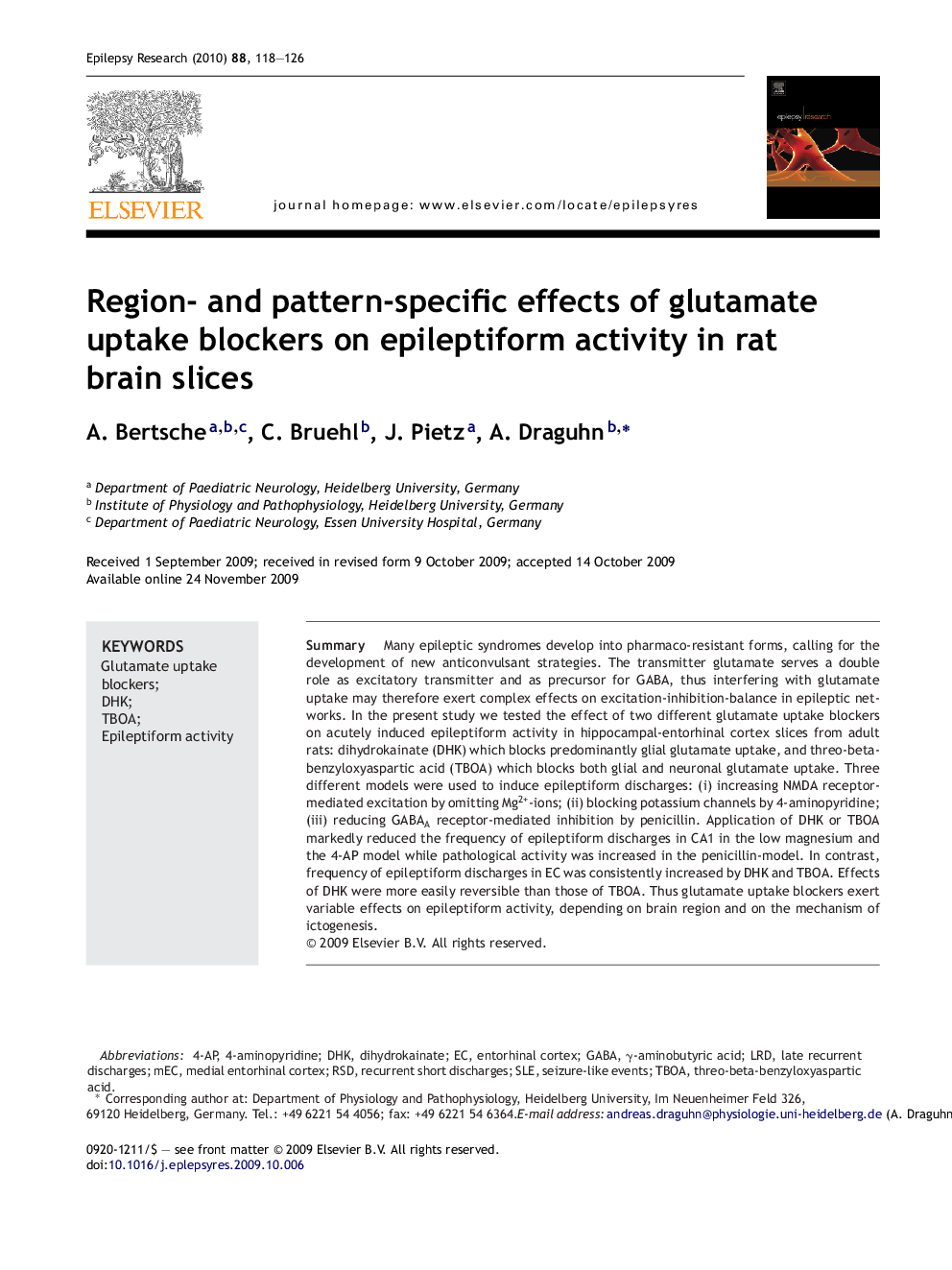| Article ID | Journal | Published Year | Pages | File Type |
|---|---|---|---|---|
| 3052664 | Epilepsy Research | 2010 | 9 Pages |
SummaryMany epileptic syndromes develop into pharmaco-resistant forms, calling for the development of new anticonvulsant strategies. The transmitter glutamate serves a double role as excitatory transmitter and as precursor for GABA, thus interfering with glutamate uptake may therefore exert complex effects on excitation-inhibition-balance in epileptic networks. In the present study we tested the effect of two different glutamate uptake blockers on acutely induced epileptiform activity in hippocampal-entorhinal cortex slices from adult rats: dihydrokainate (DHK) which blocks predominantly glial glutamate uptake, and threo-beta-benzyloxyaspartic acid (TBOA) which blocks both glial and neuronal glutamate uptake. Three different models were used to induce epileptiform discharges: (i) increasing NMDA receptor-mediated excitation by omitting Mg2+-ions; (ii) blocking potassium channels by 4-aminopyridine; (iii) reducing GABAA receptor-mediated inhibition by penicillin. Application of DHK or TBOA markedly reduced the frequency of epileptiform discharges in CA1 in the low magnesium and the 4-AP model while pathological activity was increased in the penicillin-model. In contrast, frequency of epileptiform discharges in EC was consistently increased by DHK and TBOA. Effects of DHK were more easily reversible than those of TBOA. Thus glutamate uptake blockers exert variable effects on epileptiform activity, depending on brain region and on the mechanism of ictogenesis.
